How Does the Salt Air Affect My A/C Unit?
Homeowners who have the pleasure of living on the coast are the envy of many. However, there are a few downsides to being in close proximity to the ocean — including the fact that salt air is a major source of harm to air conditioners.
Heating System on the Fritz? Troubleshooting Help Is Here
If your furnace suddenly stops producing heat, don’t panic. Troubleshooting heating problems could get the warm air flowing again. If you can’t identify or solve the problem, just pick up the phone and call your HVAC pro for expert help.
Here are the three most common areas for troubleshooting furnace issues:
Begin at the Thermostat
If the display screen is blank, replace the battery. If that’s not the problem, make sure it’s in heat mode and dial up the temperature setting a few degrees so the thermostat signals the furnace to cycle on. If it doesn’t start up, go to the main electrical panel and check for a blown fuse or tripped breaker. If everything looks fine, make sure the furnace blower compartment door is fully closed. When it’s closed properly, the door pushes in a small button that allows the furnace to operate.
Take a Look at the Air Filter
The air filter is typically situated inside the blower compartment. Alternately, it may be located behind one of the return air grilles. A clogged filter creates airflow restrictions that can cause overheating. When this occurs, it can trigger a safety feature that shuts down the furnace to prevent a fire. Running the system with a dirty air filter can cause other serious problems as well, such as reduced heat output, higher energy consumption and even equipment damage. Check the air filter monthly and replace it when necessary with the type that’s recommended in your owner’s manual.
Check the Electronic Ignitor or Pilot
Relighting a blown pilot light according to the manufacturer’s instructions may be all it takes to get an older gas furnace running again. On a newer unit, you can try resetting the electronic ignitor that’s situated inside the burner compartment. Remove the compartment cover and set the ignitor button to “off.” After five minutes or so, turn it back on. If the furnace starts up but only runs for a few minutes, have an HVAC contractor check whether the ignitor is faulty.
Contact us today at Cox Air Conditioning & Heating if you need help troubleshooting heating issues in your Clearwater area home.
Image Provided by Shutterstock.com
Is Your Heat Pump Frozen or Just a Little Frosty?
It doesn’t happen often, but when you live in Clearwater and see frost on your heat pump, is there reason to worry? A little bit of frost on a heat pump is normal due to condensation freezing as it hits the cold coils. However, if the frost is too thick or lasts too long, that’s a sign the heat pump is frozen rather than just frosty.
When a heat pump becomes frosty, the unit will usually switch into defrost mode. The refrigerant, which is quite hot in heating mode, melts the frost surrounding the heat pump.
After a set amount of time, the defrost mode switches off. The heat pump should go back to normal heating, and the layer of frost should be gone.
But what if the frost or solid ice is still there? That means the heat pump is probably frozen. There are several possible causes for a frozen heat pump:
- The outdoor coil is clogged by debris, leaves or even a snow drift. The solution? Just clear the blockage.
- The top of the heat pump may be frozen from water dripping from a gutter or even freezing rain.
- A faulty defrost control or thermostat may be to blame or the heat pump may not be reversing into defrost mode as needed. These issues require repairs by a trained HVAC technician.
As a basic rule of thumb, if there’s so much frost that air can’t get into the unit, if the frost lasts longer than a few hours, or if there’s ice on top of the unit, the heat pump is frozen. If you can’t find an obvious obstruction that would cause the freezing, contact an HVAC technician to get the heat pump running again.
To avoid some of the issues that cause frozen heat pumps, schedule preventative maintenance twice a year to ensure the heat pump is ready for both heating and the cooling seasons.
If your heat pump is frozen or for help with any other HVAC issues, contact Cox Air Conditioning & Heating. We’ve proudly served the Clearwater area since 1958.
Image Provided by Shutterstock.com
Shopping for a New Heat Pump? 4 Simple Questions
If it’s time to replace your old heat pump, it’s a good idea to be familiar with the newer innovations that you can opt for when shopping for a new one. Ask for these advanced features to improve the performance of your heating system, making it more effective and more efficient.
Compressor Options
While standard compressors can only operate at full capacity, two-speed compressors enable heat pumps to operate closer to the heating or cooling capacity needed at the time. This saves a lot of electricity and has the added benefit of reducing wear and tear on the compressor.
Another available option is a scroll compressor, which compresses refrigerant by forcing it into increasingly smaller areas. These types of compressors are not only more quiet when operating, but they also have a much longer operating life. Heat compressors with scroll pumps are capable of providing noticeably warmer air when compared to heat pumps with piston compressors.
Motor Speed
Some heat pumps are equipped with dual or variable speed motors which attempt to keep the air moving at a comfortable and more consistent velocity. This helps to minimize drafts and increase your savings on electricity. Variable speed motors tend to be more quiet when running at full speed.
Desuperheater
When you’re shopping for a new heat pump, you may notice that high-efficiency models come equipped with a desuperheater. The desuperheater heats water by recovering waste heat from the heat pump’s cooling mode. This allows the unit to heat water up to three times more efficiently than an ordinary electric water heater.
Backup Heating
Most heat pumps employ electric resistance heaters as a backup in the event of cold weather, but they can also use burners powered by propane or natural gas to supplement the heat pump. Back-up burners assist the heat pump when the weather is cold, so it doesn’t supply relatively cool air on a cold day.
For help with shopping for a new heat pump, or any other questions about home comfort, contact us at Cox Air Conditioning & Heating. We’ve provided expert service to Clearwater area homeowners since 1958.
Image Provided by Shutterstock.com
4 Simple Ways to Reduce Energy Cost in Your Florida Home
This winter, you may be looking for ways to save on your energy bill while staying comfortable in your Clearwater area home. Follow these simple steps to reduce energy costs, and you’ll benefit from the increased efficiency of your home’s heating system.
Reduce Thermostat Settings
The simplest step you can take to reduce heating costs is to reduce the thermostat temperature. Each degree you turn down on the thermostat can save up to 3 percent on your energy bill.
Try turning the thermostat down 10 degrees when you’re away at work, or remember to turn the temperature down while you’re asleep. Investing in a programmable thermostat can help manage these settings so you don’t have to remember to turn the temperature up and down.
Reduce Water Heater Setting
Reducing the temperature setting on your home water heater can reduce energy costs, and you probably won’t even notice the difference. Most water heaters are factory set to heat water to 140 degrees, but turning this setting down to 120 degrees won’t be noticeable, even when you’re taking hot showers. This reduction can save at least 6 percent in water heating costs.
Seal Air Leaks
Plugging air leaks is an simple yet effective step to take to increase comfort and efficiency in your home. Doors and windows are common areas where warm air is allowed to escape, while cold air seeps indoors. Target these areas with weatherstripping, an inexpensive solution which can go a long way in preventing heat loss.
Add Insulation
Good insulation is crucial in maintaining the comfort level in your home, so you want to be sure your home’s insulation is at the proper level. The cost of adding insulation can be earned back in a year of energy savings. The correct level of insulation can save you up to 20 percent in your heating cost.
For more information about increasing your home’s efficiency to reduce energy costs, contact us at Cox Air Conditioning & Heating. We’ve provided expert service to Clearwater area homeowners since 1958.
Image Provided by Shutterstock.com
What Causes of Evaporator Coil Leaks in Your Clearwater Air Conditioner?
Evaporator coil leaks can reduce your A/C system’s energy efficiency and repairs can be expensive. Fortunately, there are some things you can do to minimize the causes of evaporator coil leaks in your Clearwater home.
Water condensation from the air conditioner is normal. Water vapor condenses and collects on the evaporator coil as the coil takes heat from the surrounding air. As the water builds up on the coil, it drips into a pan below and flows out of your house. The only time you need to worry is if the drain pan leaks or the drain pipe backs up and water spills onto the floor.
Leaks in the evaporator coil are a more expensive A/C problem than overflowing condensate drains. The air conditioner doesn’t burn refrigerant. It should maintain the same volume in a closed loop. If your HVAC tech has to add refrigerant during an annual maintenance visit, you probably have a leaky coil.
Causes of Evaporator Coil Leaks
Manufacturing defects and faulty installation are causes of evaporator coil leaks that occur in the first few months after a new system is put into service. These leaks can usually be fixed by tightening connections or re-soldering joints.
One of the other causes of evaporator coil leaks is formicary corrosion, which results when formic acid on the copper coil slowly eats tiny holes through the coil wall. Formic acid deposition is a result of the interaction of moisture on the coil with volatile organic compounds (VOCs) in your indoor air. VOCs get into your air from cleaning products, paint, new carpeting and other construction materials.
Preventing Evaporator Coil Leaks
There are a few steps you can take to prevent or delay evaporator coil leaks:
- Have A/C coils cleaned every year to minimize corrosive build-up on the copper tubing.
- Install ultraviolet (UV) lighting inside ductwork to neutralize VOCs in the air supply.
- Provide a fresh outdoor air supply via energy-exchanging vents.
- Minimize the use of VOCs inside your home.
For more information about causes of evaporator coil leaks, or for other home comfort concerns, call us at Cox Air Conditioning & Heating. We proudly serve the HVAC needs of those in the Clearwater and surrounding areas.
Image Provided by Shutterstock.com
Step-by-Step Instructions on How to Replace the Batteries in Your Home Thermostat
Many Tampa homeowners aren’t aware that they need to change their thermostat batteries on a regular schedule to avoid unexpected loss of air conditioning or heating service. Some thermostats are hard-wired to the house power supply and don’t have batteries, but most modern digital thermostats are battery operated. When it comes time for the change, homeowners need to know how to replace the batteries in a thermostat.
Since there are dozens of makes and models of thermostats in use, it’s impossible to create just one list of steps describing how to replace the batteries in a thermostat that will cover all situations. But, here are some general tips to follow:
- Read the owner’s manual that came with the thermostat for guidelines on how often to install new batteries and instructions for changing them.
- Unless the owner’s manual tells you otherwise, replace the batteries once a year. If you combine this task with other annual maintenance tasks such as replacing smoke alarm batteries, you’ll be less likely to forget to do it.
- Even without written instructions, changing thermostat batteries is a fairly straightforward process. First, carefully remove the cover or faceplate from the thermostat so you can see the batteries or the battery holder. Take note of the position of the batteries, so when you put new batteries in heir polarities are correct. Use new batteries that are the same type and voltage as the old ones. Put the new batteries in and replace the cover.
- Test the thermostat with the new batteries in place and reset the programming if necessary. Most newer programmable thermostat models have internal memories so the thermostat doesn’t lose its settings when the batteries are replaced.
If you’re lost on how to replace the batteries in a thermostat of your Tampa area home, contact Cox Air Conditioning & Heating. We’re here to help!
Image Provided by Shutterstock.com
Window Treatments Are More Than Decoration — They Can Save You Energy
In many homes, the windows are the weak spot in the building’s outer envelope. Air often leaks through or around the windows, especially in poor installations, and the glass offers little insulation value, especially if the windows are single-pane. Together, these problems can reduce your Florida home’s energy efficiency and increase your utility bills, but by installing the proper window treatments and using them effectively, you can save energy and money.
How Window Treatments Can Help Save Energy:
During the warmer months of the year, any sunlight that finds its way inside your home can increase the temperature through the greenhouse effect, making your air conditioner work harder. Adding shade to, or reflecting heat away from, your south- and west-facing windows during the day can keep your home cooler. During the winter, you can save energy by allowing the sun to naturally heat your home, and then at night, you can use insulated window treatments, such as heavy drapes, to cover the windows and hold the heat in overnight for a longer period.
Types of Window Treatments That Can Save Energy:
- Drapes or Curtains: Thick or multiple-layer insulated curtains or drapes that completely cover the windows, down to the floor, provide the most insulation value.
- Shades or Blinds: Inexpensive shades or blinds in light colors, or those made from reflective materials, can offer shade for the windows and reflect heat away during the summer. Versions made from better materials, such as cellular shades, quilted shades or some thick vertical blinds also can offer insulation that can be helpful all year long.
- Awnings or Overhangs: Exterior overhangs of the proper size can shade the windows during the summer, and allow the sun through during the winter, when it’s lower in the sky.
- Shutters: Interior or exterior versions are available with insulation for winter use, and they also can provide shade during the summer.
For more information about how to save energy, beyond choosing efficient window treatments, talk to our home comfort experts at Cox Air Conditioning & Heating, serving Clearwater, Tampa, St. Petersburg and the surrounding area.
Image Provided by Shutterstock.com
Is Your Home Lighting Costing You Energy Dollars?
Lighting is a necessity for any modern home, but the cost of providing lights, both indoors and out, can amount to a significant amount over the course of a year. By changing the type of bulbs you use for home lighting, energy dollars can be saved and significant energy efficiency can be achieved. Here are a few ways to help trim energy costs with home lighting.
New lighting standards that took effect in 2012 promote the use of energy-efficient light bulbs to save energy dollars. You can take advantage of these energy-saving standards and reduce your lighting bills by using newer types of light bulbs such as:
- Compact fluorescent lamps: CFL bulbs can slash the energy used for lighting by as much as 75 percent. They’re smaller versions of the large fluorescent tubes often seen in retail and commercial settings and often resemble coils of glass tubing piled on a standard light bulb base. CFLs are generally more expensive than other types of bulbs, but they can pay for themselves in energy savings in about nine months. Since these bulbs often last much longer than that, they’re economical choices that pay off in the long term.
- Energy-saving incandescent bulbs: Newer incandescent bulbs must provide at least a 25 percent reduction in energy use over older bulbs of the same style. They use a halogen capsule around the filament to increase the efficiency and longevity of the bulb. Typically, these types of incandescent bulbs can last up to three times longer than standard incandescent lights.
- Light-emitting diodes: LEDs can save up to 80 percent on energy usage. These bulbs turn electrical energy into light rather than using a filament to produce light. LED bulbs are among the more expensive lighting options, but they can last up to 25 times longer than comparable incandescent bulbs.
For more than 56 years, Cox Air Conditioning and Heating has served HVAC customers in Clearwater, St. Petersburg, Tampa and surrounding Florida communities. Contact us today for more information on home lighting and how to save energy dollars with better lighting options.
Image Provided by Shutterstock.com
Your Ceiling Fan Can Work With the A/C to Help You Save
It’s another hot and humid summer in the Tampa-Clearwater area. In Florida, a good air conditioner is more than a luxury; it’s a necessity. The problem is, running your A/C all day (and even through the night) drives your energy bills through the roof. Is there a way to stay cool and comfortable this summer without breaking the bank? There are a number of steps you can take to reduce your energy bills. One of the simplest and most effective is to use ceiling fans.
As with window, standing or box fans, ceiling fans work best when you’re directly in the path of their airflow. However, ceiling fans do a better job of circulating air throughout the room than other fans. They also use far less energy than your A/C. Because of this, if you run your ceiling fan and A/C together, you can turn the thermostat up three or four degrees, saving energy, with no reduction in your comfort level. The wind-chill factor makes the air feel cooler as it blows against your skin, so you can feel cool and comfortable without wasting power.
If you don’t have ceiling fans in your home, installing them can be a great investment. But what kind of ceiling fan do you need? It depends on the size of the room. In a smaller room (up to 225 square feet), a 36-inch diameter fan will do best, whereas for a larger room, you’ll probably want a 52-inch fan. If the room is more than 18 feet long, you’ll need at least two fans to circulate the air effectively. You should also consider how loud the fan runs. Getting a slightly more expensive fan usually means it will operate more quietly. Check the noise rating before you make your purchase.
Most importantly, make sure, when you purchase a ceiling fan, that it bears the blue Energy Star label. This means that it’s been certified by the federal Energy Star program to save energy over standard models while providing the same or better level of performance.
For more help with ceiling fans and saving energy in your Tampa, Clearwater or St. Petersburg area home, please contact us at Cox Air Conditioning & Heating.





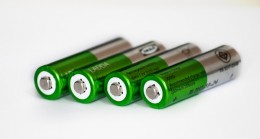
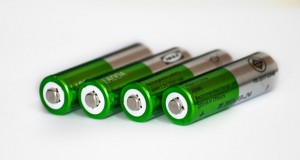


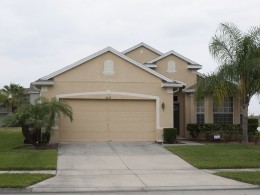
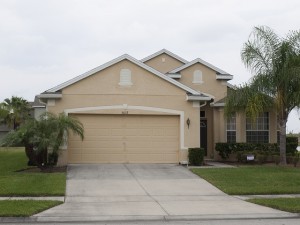
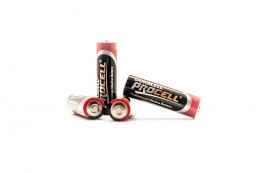
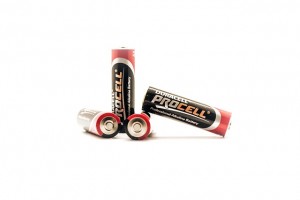





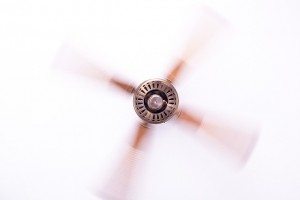

Recent Comments